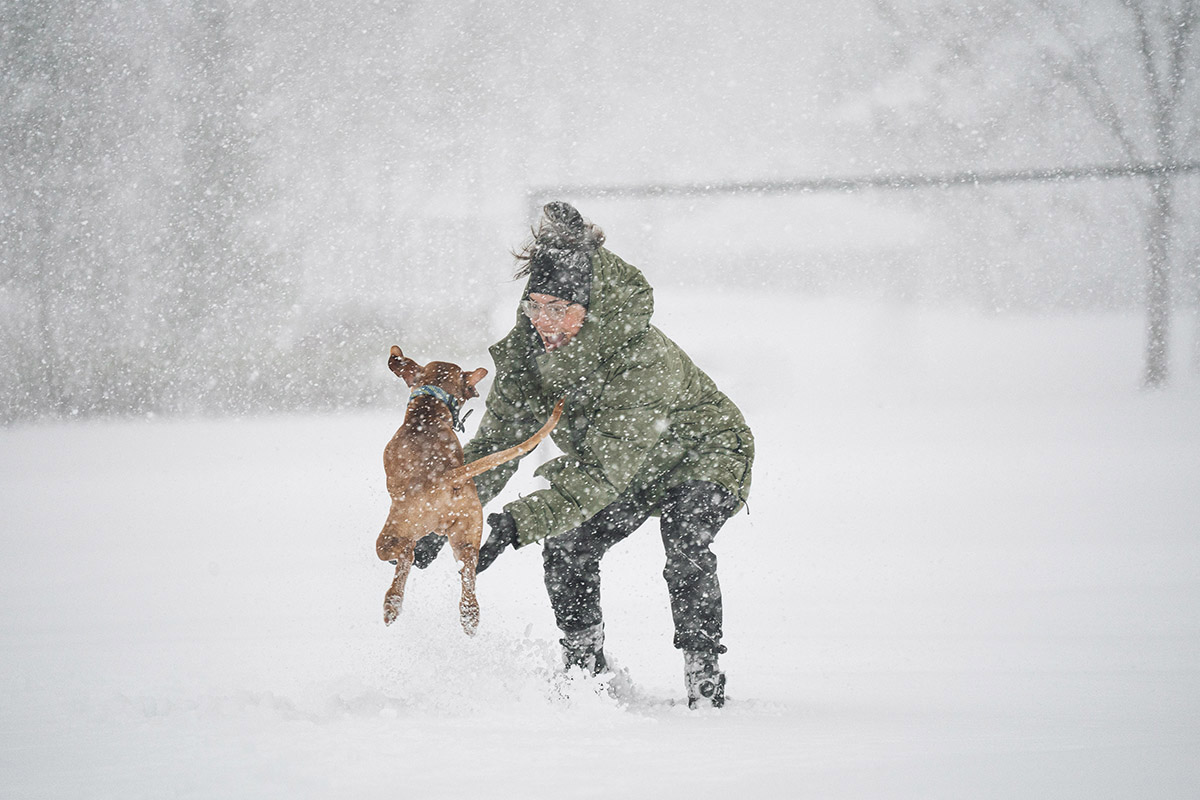Frosty Frames
With her Tamron 50-400mm VC ultra-telephoto lens, Michele Grenier ventures outside for snow-filled lifestyle portraits.
Share the article:
More Photo Tips | Video Gallery | Photo Gallery | Enewsletter sign-up
By Jenn Gidman
Images by Michele Grenier
You can usually find Michele Grenier peering inside a boxing ring or observing a gymnastics meet, crouched down with her camera to make herself invisible as she captures elite athletes doing what they do best. During wintertime in Quebec, however, the sports action commercial and advertising photographer occasionally ditches the coziness of the gym for the snow-filled scenery of her Canadian hometown.
“I enjoy taking portraits and landscapes that show the vibrancy of life in a more relaxed setting,” Michele says. “Unlike controlled indoor settings, the great outdoors offers a canvas of endless possibilities, from icy landscapes to scenic parks bathed in the warm hues of a sunset.” Accompanying Michele in her outdoor adventures is the Tamron 50-400mm Di III VC VXD ultra-telephoto lens for her Sony mirrorless camera system.
“Instead of carting around multiple lenses, I pack the 50-400mm and have it all,” Michele says. “At just 7.2 inches long and weighing just over 40 ounces, this lens stands out for its compact, lightweight design. I’m able to capture people frolicking in the snow, but thanks to the Tamron 50-400mm lens’s Minimum Object Distance (MOD) of 9.8 inches and a maximum magnification ratio of 1:2, I can also zoom in for excellent close-up shots of the scenery. Plus, I don’t always feel like lugging a tripod or monopod around. The 50-400mm’s Vibration Compensation (VC) feature minimizes camera shake in those more challenging situations.”
MICHELE’S WINTER PHOTOGRAPHY TIPS
Master exposure.
When venturing into snowy environments, exposure becomes critical. The abundance of white, especially during storms, can pose challenges. Strike a balance between not overexposing the scene so that it becomes a blinding white—unless you’re trying for a more high-key, artistic look—and avoiding underexposing, where the snow appears dull and gray. Experiment with exposure settings to find the sweet spot so that you preserve the crispness of the snow without going to either extreme. Also, for optimal results, explore wider apertures; I tend to stay around F6.3, depending on the situation. This introduces a touch of blur while ensuring the snow retains its luminosity.
Practice pictures in the falling snow.
There’s something so mesmerizing about these type of photos. However, in the picture you see here, there was so much snow. I was taking this photo of my subject and her dog from pretty far away, at 400mm, and there was a lot of snow in between them and my lens. It’s easier on your autofocus if you’re closer to your subject and can take a shot like this at, say, 100mm. You also might have to bump up your ISO quite a bit, but the good thing with a photo like this is that you won’t even notice the noise. To freeze the snowfall’s motion, shoot at least 1/500 sec.
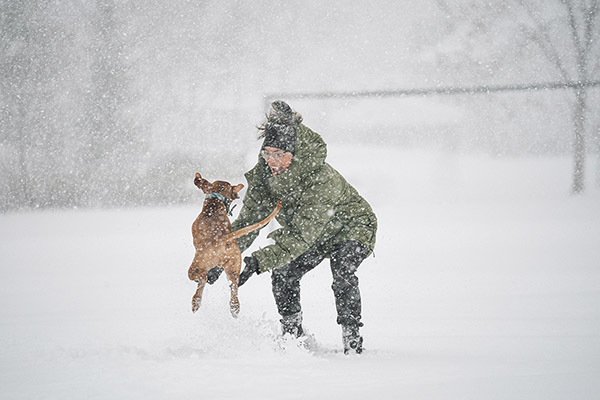
Tamron 50-400mm (400mm), F6.3, 1/800 sec., ISO 1250
Click image to view larger
Play with depth of field.
Slow down to take in the pristine winter landscapes. What might seem to the casual observer to be a boring tree branch with some clumps of snow is the perfect time to experiment with blurring out backgrounds or keeping everything in focus. I had fun with this photo of a snow-filled branch, which also had a bit of luck involved. I was wandering around the day after a snowstorm—if I’d gone at any other time, the snow would probably have been iced over or melted.
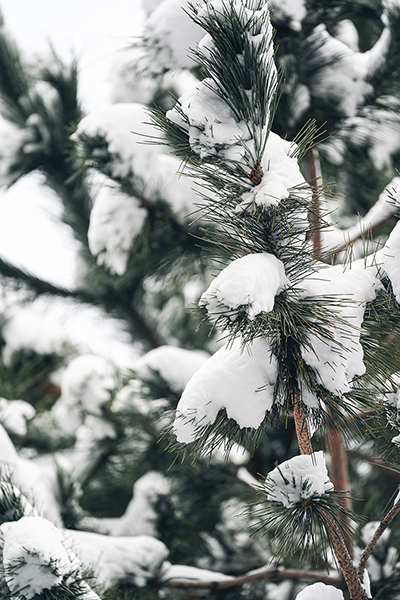
50-400mm (400mm), F6.3, 1/500 sec., ISO 500
Click image to view larger
Tap into the natural environment.
It can be challenging to make a picture of a winter run compelling. I try to weave natural elements into my images in a thoughtful way, whether it’s an element in the foreground, like a swish of reeds or branches, or embracing natural leading lines, such as a bridge pathway or a meandering trail through the woods, which can guide the viewer’s eye and add depth to the photo.
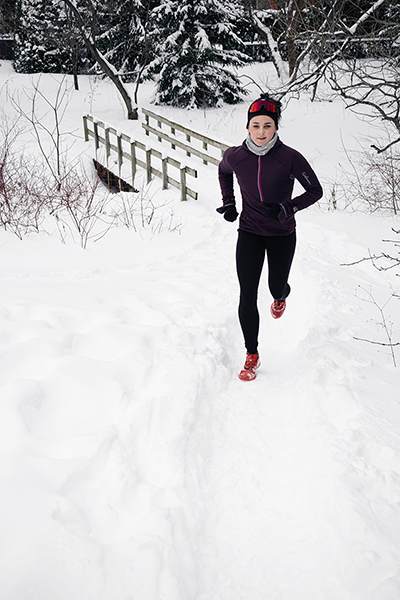
50-400mm (50mm), F6.3, 1/1000 sec., ISO 800
Click image to view larger
If your subject is wearing dark clothing, change your angle slightly to create the best composition. For instance, when I first started framing the runner here, she was set against the woods, with not a lot of contrast between her and the trees. I shifted so she was positioned more against the white of the snow, which gave me that contrast I was looking for. This also helps my autofocus latch onto my subject.
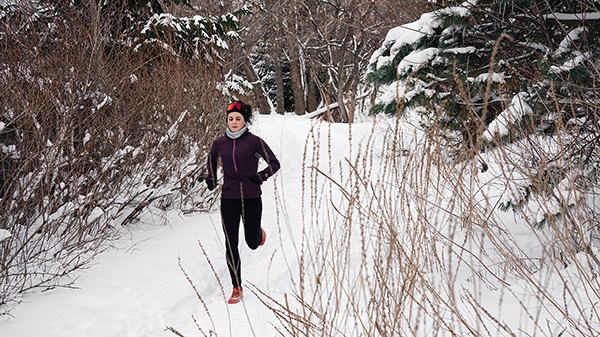
50-400mm (400mm), F6.3, 1/800 sec., ISO 1250
Click image to view larger
Consider your winter photos for next year’s holiday card.
The holidays are over for 2023, but the images you take now could be the perfect backdrop for festive greeting cards or social media posts at the end of 2024. This is especially true with the clean white of a snow-filled scene, which can serve as a card’s blank canvas for a company logo or message from your family. It’s a terrific way to extend the life span of your winter captures for even more enjoyment.
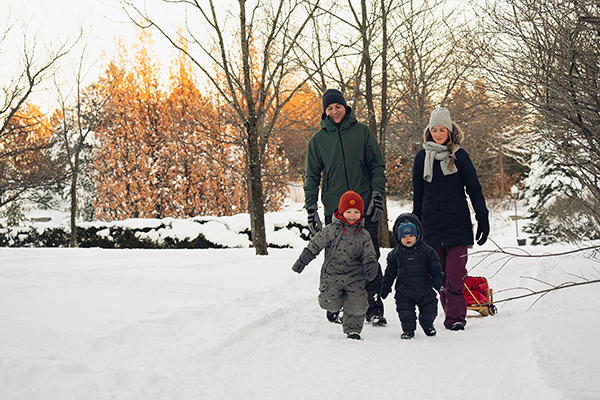
50-400mm (85mm), F6.3, 1/500 sec., ISO 2500
Click image to view larger
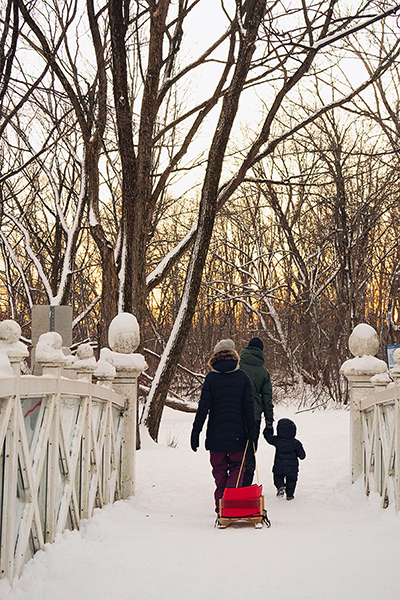
50-400mm (52mm), F6.3, 1/400 sec., ISO 2500
Click image to view larger
To see more of Michele Grenier’s winter photography tips and work, check out her website and Instagram.
Is your Tamron News subscription up to date? Click to subscribe to all editions of Tamron News featuring how-to tips, new product news, contest announcements and inspiration!
More Photo Tips | Watch Videos | Learn More About Tamron Lenses | Photo Gallery
